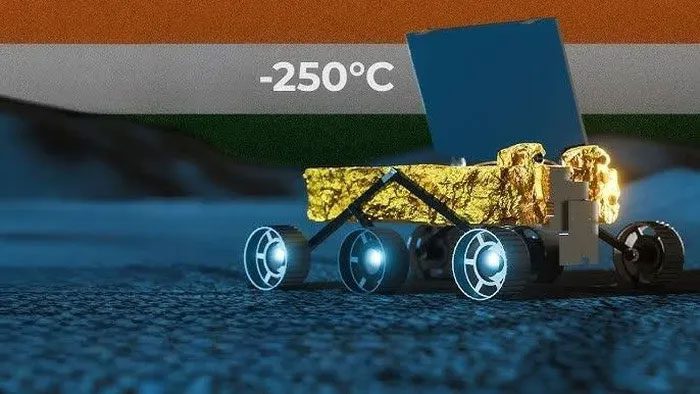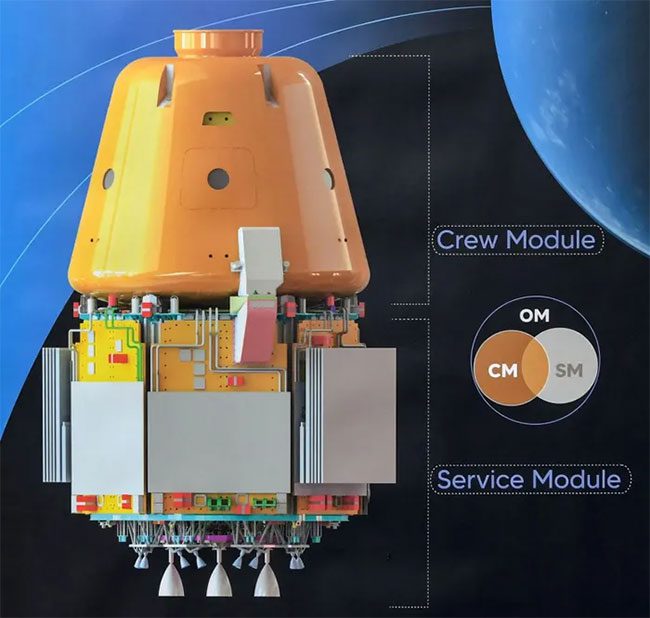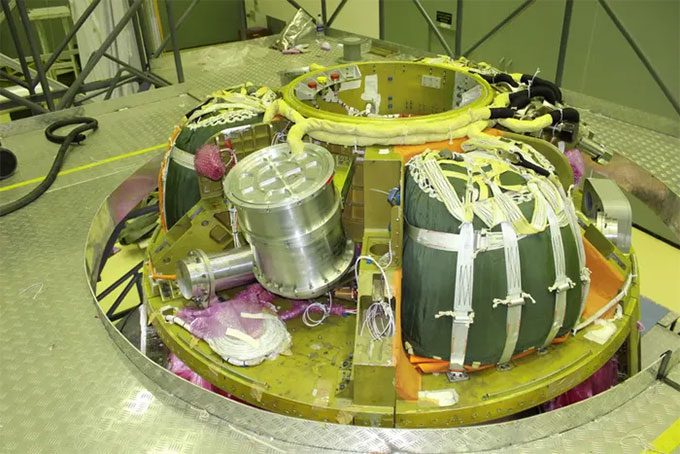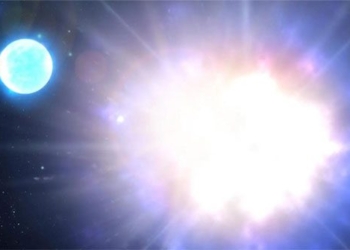India’s space program is busier than ever following the historic success of Chandrayaan-3.
India’s Lander No Longer Has Hope of Revival
Days after the Indian Space Research Organisation (ISRO) attempted to re-establish communication with the Vikram lander and the solar-powered Pragyan rover from the Chandrayaan-3 mission, former ISRO Chairman A.S. Kiran stated that India’s third lunar mission has officially concluded, according to the largest news agency in India, PTI.
“There will be no hope of revival anymore. If both Vikram and Pragyan could have been ‘revived’ after the harsh cold lunar night (ranging from -200 degrees Celsius to -250 degrees Celsius), it would have happened by October 6. Now, there is no hope left,” Kiran told PTI.

An illustration of the solar-powered Pragyan rover, permanently resting in the cold lunar night at -250 degrees Celsius. (Photo: The Tribune).
After a month filled with events on the lunar surface, ISRO began efforts to establish contact with the Chandrayaan-3 lander and rover on September 22. However, to date, they have not received any signals from the duo.
Despite this, the Chandrayaan-3 mission has been a resounding success.
ISRO stated that if their spacecraft cannot ‘revive’, both will remain on the Moon as ‘India’s Lunar Ambassadors.’
With Chandrayaan-3, India made history on August 23, 2023, by becoming the first country to land near the Moon’s south pole and making several valuable scientific discoveries on Earth’s natural satellite. Previous landing missions by the Soviet Union, the United States, and China were all located in the equatorial region.
The former ISRO chairman noted that the success of Chandrayaan-3 will “benefit future missions of India in terms of knowledge/experience as well as planning activities to be conducted in the near-south pole region of the Moon.”
According to A.S. Kiran, there is a possibility that ISRO will carry out a mission to bring lunar samples back to Earth for research, although he did not provide any timeline for such a monumental task.
The “Dusk” of Chandrayaan-3 is the “Dawn” of Gaganyaan
As the Chandrayaan-3 mission settles into eternal slumber on the Moon, India is ushering in a new dawn of human spaceflight, with ISRO currently busy with another significant space endeavor: Gaganyaan, Indianexpress reports.
Following the success of Chandrayaan-3 and Aditya-L1 (the solar probe mission launched on September 2), ISRO is preparing to conduct the first test flight under its crewed mission, known as Gaganyaan.
Specifically, ISRO announced that they are preparing to launch the “Test Vehicle Demonstration Flight-1 (TV-D1)” – an uncrewed flight test (for the Gaganyaan mission) designed to validate the performance of the crew’s emergency escape system.

The complete module design of the Gaganyaan spacecraft mission, including the service module and crew module. (Source: Britannica).
According to the design, the crew module (CM) of the Gaganyaan mission will be where astronauts will stay during the mission under Earth-like pressure conditions.
ISRO stated that the TV-D1 module will resemble the crew module (CM) of Gaganyaan, meaning it will have the same size and overall mass, as well as contain all the same deceleration and recovery systems. The only difference is that this test version will not be pressurized.
Gaganyaan is India’s first crewed mission. The cost of the Gaganyaan mission is approximately 90.23 billion Indian rupees (1.08 billion USD), according to Reuters.
On October 21, 2023, ISRO will launch the empty TV-D1 module from the Satish Dhawan Space Centre in India before safely returning it to Earth, as stated by Jitendra Singh, a senior official of India, on Tuesday (October 11), Reuters reports. Currently, the CM module is ready to be transferred to the launch facility.
ISRO noted that the TV-D1 module will also test the functionality of various components of the Gaganyaan mission, including the parachute system designed to stabilize and slow the spacecraft during re-entry, as well as the “recovery-assist propulsion system.”
The Crew Escape System (CES) will also be tested during the TV-D1 module testing.
According to Space, the Gaganyaan mission will be India’s effort to launch at least three astronauts into low Earth orbit (LEO) at an altitude of 400 km by the end of 2024 and safely return them. A specific timeline for the launch has yet to be officially announced by ISRO.

Equipment to be used in the test flight of the TV-D1 module, serving the crewed Gaganyaan mission by the end of 2024. (Photo: ISRO).
Space summarizes that India’s technology and engineering demonstration on October 21 will proceed as follows:
The test flight of the TV-D1 module will simulate a mission abort scenario during launch – when the spacecraft is moving at a speed of Mach 1.2 – which is expected to be encountered in the Gaganyaan crewed mission.
Afterward, the abort sequence will be automatically executed, starting with the separation of the Crew Escape System (CES) and the deployment of multiple parachutes, ultimately resulting in the safe landing of the TV-D1 module in the sea.
Upon returning to Earth, the TV-D1 will be retrieved by the Indian Navy’s diving team in the Bay of Bengal using specialized vessels.
Jitendra Singh mentioned that after the successful test flight of the empty TV-D1 module, ISRO will conduct another test flight, this time with a robot on board. The robot named Vyommitra will be present as a humanoid, with arms, no legs, but capable of speaking like a human.
The purpose of this is to test the effects of pressure on the human body in an emergency mission abort scenario.





















































